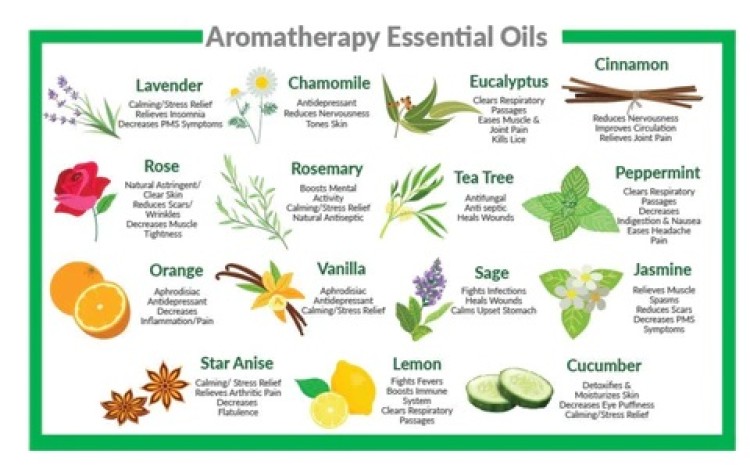
Aromatherapy, or essential oil therapy, refers to a range of traditional, alternative or complementary therapies that use essential oils and other aromatic plant compounds.
Essential oils have been used for nearly 6,000 years, with the aim of improving a person’s health or mood.
The National Association for Holistic Aromatherapy (NAHA) defines aromatherapy as “the therapeutic application or the medicinal use of aromatic substances (essential oils) for holistic healing.”
In 1997, the International Standards Organization (ISO) definedTrusted Source an essential oil as a “product obtained from vegetable raw material, either by distillation with water or steam, or from the epicarp of citrus fruits by a mechanical process, or by dry distillation.”
Aromatherapy is normally used through inhalation or as a topical application.
Inhalation: the oils evaporate into the air using a diffuser container, spray, or oil droplets, or breathed in, for example, in a steam bath. Apart from providing a pleasant smell, aromatherapy oils can provide respiratory disinfection, decongestant, and psychological benefits. Inhaling essential oils stimulates the olfactory system, the part of the brain connected to smell, including the nose and the brain. Molecules that enter the nose or mouth pass to the lungs, and from there, to other parts of the body.
Topical applications: massage oils, and bath and skin care products are absorbed through the skin. Massaging the area where the oil is to be applied can boost circulation and increase absorption. Some argue that areas that are richer in sweat glands and hair follicles, such as the head or the palms of the hand, may absorb the oils more effectively.
Essential oils are never applied directly to the skin. They must always be diluted with a carrier oil. Usually, a few drops of essential oil to an ounce of carrier oil is the concentration. Most common carrier oils are sweet almond oil or olive oil.
To do an allergy test:
If there is no allergic response within 24 to 48 hours, it should be safe to use.
Some people report developing allergies to essential oils after using them many times before. If a new allergic response appears, the individual should stop using it immediately and avoid its smell.
To achieve a 0.5 to 1 percent dilution, use 3 to 6 drops of essential oil per ounce of carrier. For a 5 percent dilution, add 30 drops to one ounce of carrier.
A maximum concentration of 5 percent is generally considered safe for adults.
Ingesting, or swallowing, essential oils is not recommended. Taken by mouth, the oils can damage the liver or kidneys.

|

|
Currently, there are no comment.
Login to comment